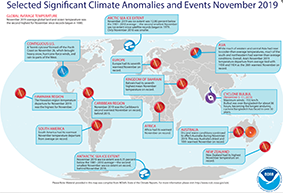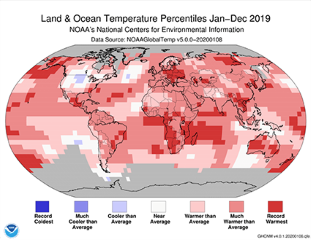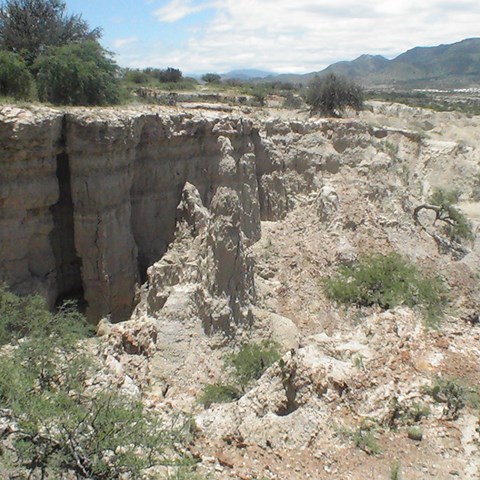Climate experts from National Aeronautics and Space Administration (NASA) and the National Oceanic and Atmospheric Administration (NOAA) released their annual assessment of global temperatures and the major climate trends of 2019, yesterday. The globally averaged temperature departure from average over land and ocean surfaces for 2019 was the second highest since record keeping began in 1880, according to NOAA scientists.
Analyses show that global average surface temperatures last year were nearly 1 degree Celsius higher than the average from the middle of last century, caused in large part by emissions of carbon dioxide and other heat-trapping gases from the burning of fossil fuels. That much warming means the world is far from meeting goals set to combat climate change.

Selected significant climate anomalies and events in 2019. Click to enlarge. Ill: NOAA

Land & ocean temperature percentiles Jan-Dec2019. Click to enlarge. Ill: NOAA
Highlights from the temperature data:
- Global land and ocean surface temperature: For 2019, the average temperature across global land and ocean surfaces was 0.95°C above the 20th century average. This was the second highest among all years in the 1880–2019 record and just 0.04°C less than the record value set in 2016.
- Global land surface temperature: The globally averaged land surface temperature for 2019 was 1.42°C above the 20th century average. This value tied with 2015 as the second highest among all years in the 140-year record, behind 2016.
- Global sea surface temperature: The 2019 globally averaged sea surface temperature was also the second highest on record, with a temperature departure from average of 0.77°C above the 20th century average. Only 2016 was warmer at 0.79°C.
- Global ocean heat content: The upper ocean heat content, which addresses the amount of heat stored in the 0–2000 meters depth of the ocean, was the highest on record by a wide margin.
(Source: NOAA State of the climate: 2019 Global climate report)
- It is a very worrying development with another record warm year, however not surprising since the science clearly shows that this is the path we are on with current practices. Climate change fundamentally impacts all SLU’s areas. We need to enhance our efforts for increased climate resilience in for example agriculture, to contribute to solutions for increased food security, says Sara Gräslund, Head of SLU Global about the findings.
What does SLU do for the climate? We provide knowledge, decision support and facts about climate solutions. We teach our students about sustainability, and they inspire us to further reduce our climate impact.
Read about some examples of how SLU contributes.


